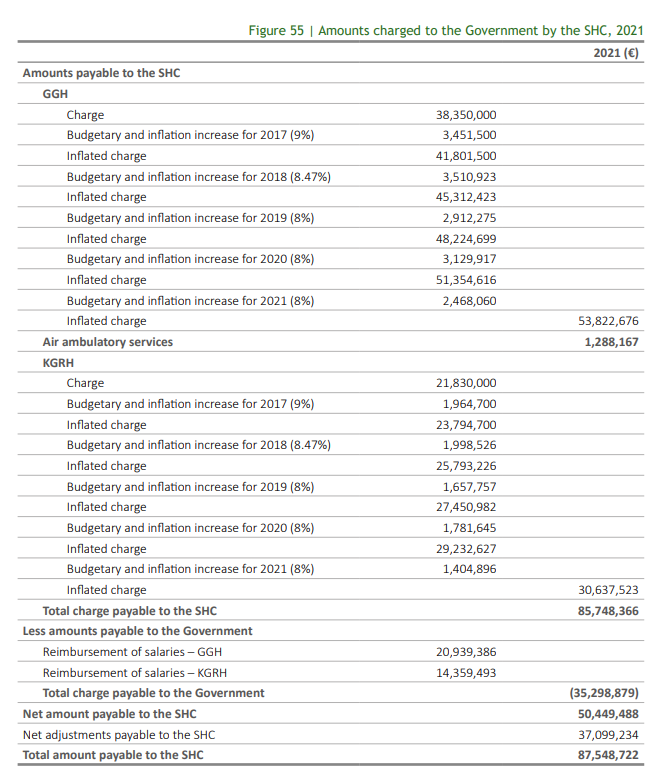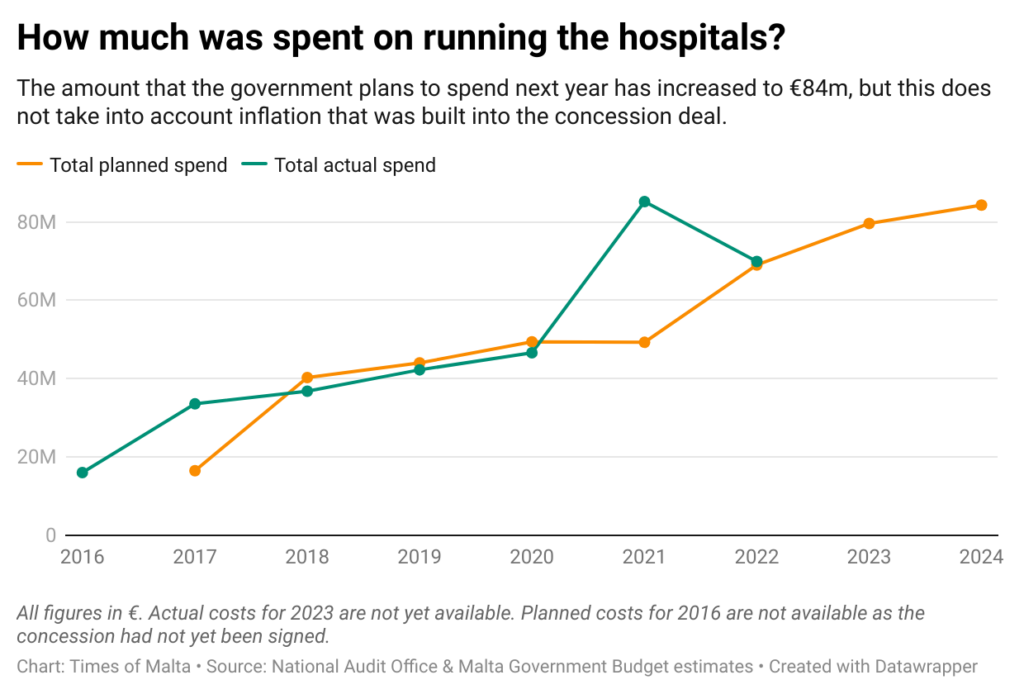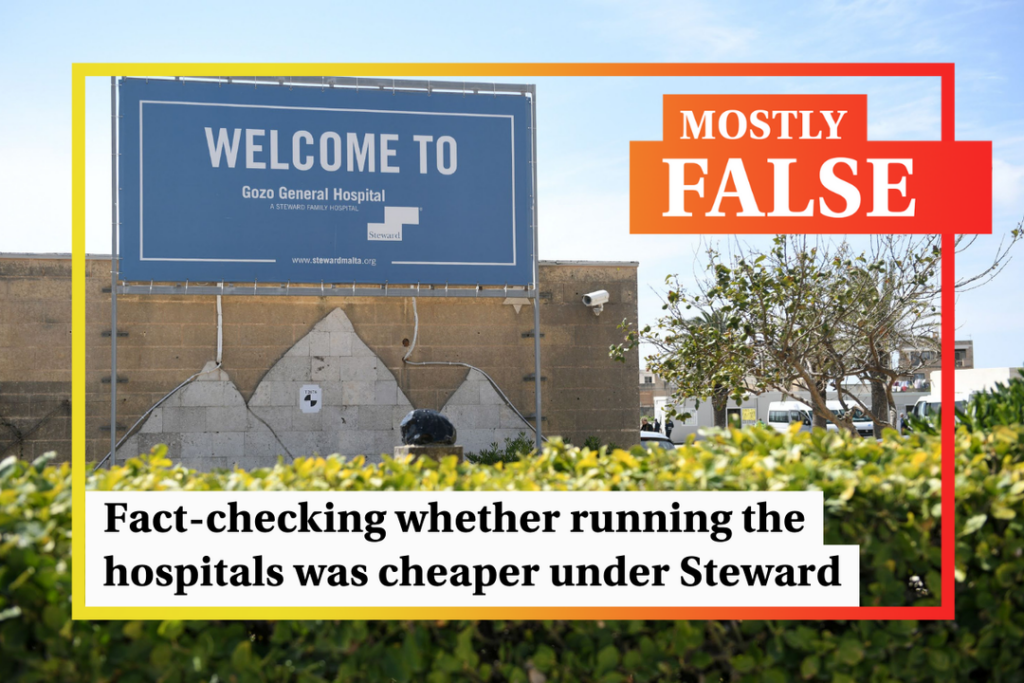Following the court’s decision late last month to confirm a ruling scrapping the concession of three public hospitals to a private consortium, Prime Minister Robert Abela claimed that running Karin Grech and Gozo General hospitals is costing the government as much money as it was paying Steward Healthcare.
The hospitals were first granted to a consortium called Vitals Global Healthcare in 2016 which, in turn, transferred the hospitals to the US-based Steward Healthcare a few years later. The deal had long been mired in suspicions of corruption and misappropration of funds, with a Maltese court annulling the deal earlier this year, describing it as “fraudulent”.
An appeal filed by Steward Healthcare was rejected by the court of appeals late last month, leaving the running of the hospitals in the hands of the Maltese government.
Speaking to Times of Malta, Abela said “the government’s expense to run the Gozo and Karin Grech hospitals reflects what we paid Steward. It is certainly not cheaper and may even be higher”.
Several readers have written to Times of Malta in recent weeks asking for this claim to be verified.
Deal still in transition phase
Publicly-available expenditure figures suggest that this is mostly false, but need to be qualified.
The deal between the government and VGH/Steward never moved beyond the initial transition phase, during which VGH and Steward were obliged to keep the same standard of care that existed before the concession was signed.
This means that the money paid by the government was not actually intended to improve the service, but to simply keep the hospitals ticking over in the same way that they did before the concession ever came into effect.
€79m allocated this year, €86m next
Figuring out how much the hospitals cost to run is trickier than it seems.
Some indications of how much this costs can be gleaned from budget estimates published from year to year, as well as from the detailed reports into the deal published by the National Audit Office (NAO).
The most recent NAO report, published earlier this year, shows that the government paid Steward some €87.5m to run the two hospitals throughout 2021, the last year for which figures are available.
This was more than in previous years. The amounts paid by the government had risen from €33.5m in 2017, the first full year of the deal, to €49m in 2020.

Luckily, NAO’s numbers more or less tally with those presented by the government in its budget documents throughout the years.
These show that the government had allocated €16.5m for the concession in its first full year in 2017. This swelled drastically in the deal’s later years, settling at just below €70m in 2022, before the deal was scrapped early the following year.
Does this mean that the government never spent more than it said it would? Not quite.
In 2017, the government ended up spending €33.5m on the concessions, double what it had allocated. A few years later, the government’s spending on the hospitals ballooned to €85m in 2021, despite only allocating €49m.
In most other years, the government actually spent a little less on the hospitals than it said it would.
What about next year?
Last week’s budget revealed, for the first time, how much the government plans on spending on running the hospitals over the next year.
While the planned spend on the Gozo General Hospital has dipped slightly by €7.5m, that of the Karin Grech hospital has received a bump of a little over €2m.
The government is also allocating €9m for infrastructure at Gozo and €1m for Karin Grech.
This brings the total to €84.2m to run the two hospitals in 2024. On paper, this is €5.2m more than it had planned to spend this year.
However, that’s not quite the full story.

Allowing for inflation
The Steward concession stipulated that the amount paid by the government would increase each year to allow for inflation. In practice, this meant that the amount given to Steward increased by some 8% each year over the past several years.
Assuming that a similar 8% increase would have taken place this year means that the government would have paid some €86m to run the two hospitals next year, had the deal not been scrapped.
This ultimately suggests that the government is now paying almost €2m less than it would have done in a hypothetical scenario where the concession was still in place.
Verdict
The government’s budget estimates suggest that it plans to spend €5.2m more on running the hospitals next year than it did this year. However, the allocation does not include inflation, which had been built into the concession deal.
If an annual inflation increase taken into account, this would mean that the government could be spending €2m less than it would have under Steward.
While the exact amount that the government will be spending on the hospital may vary from its projections, the budget estimates show that the government plans to spend less than it did previously.
The claim is therefore mostly false as the evidence generally refutes the claim, although some minor aspects of the claim may be accurate.
The Times of Malta fact-checking service forms part of the Mediterranean Digital Media Observatory (MedDMO) and the European Digital Media Observatory (EDMO), an independent observatory with hubs across all 27 EU member states that is funded by the EU’s Digital Europe programme. Fact-checks are based on our code of principles.
Let us know what you would like us to fact-check, understand our ratings system or see our answers to Frequently Asked Questions about the service.





